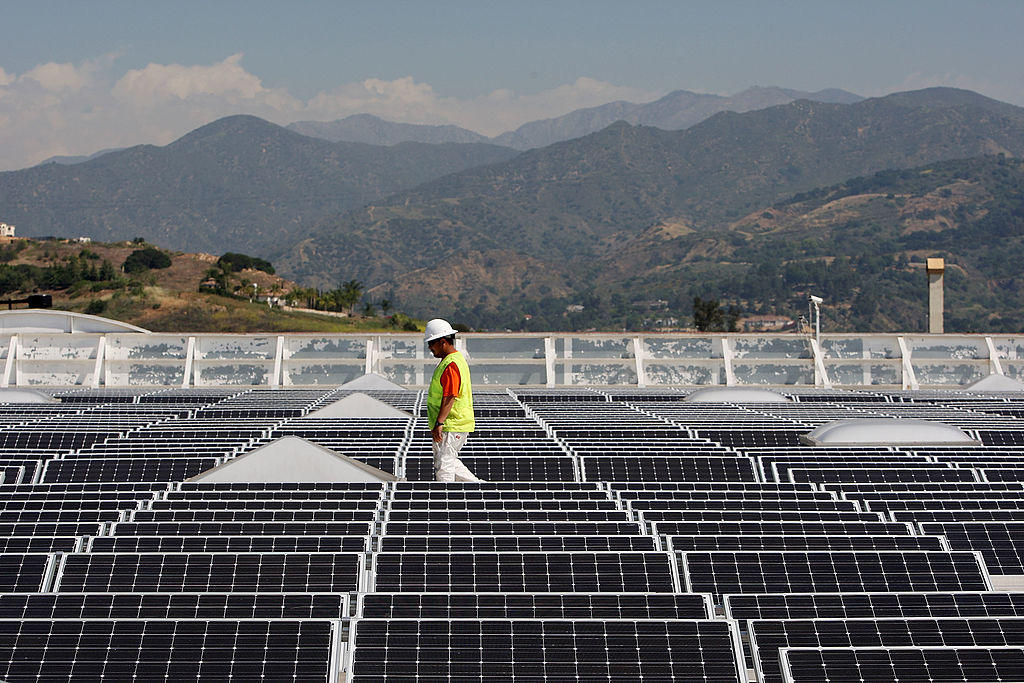
Solar energy offers a cheap, renewable source of electricity that could reduce and, eventually, eliminate our need for greenhouse gas-emitting power generation plants. But solar farms as they are currently envisioned come at a cost: acres and acres of land that could otherwise be used for food production or rewilding, creating biodiverse wildernesses that preserve nature and function as carbon sinks. But why choose between saving biodiversity and stopping global warming when a third option exists, one (and sometimes two) floors up?
The United States’ obsession with Big Box stores—the Walmarts, Targets, Ikeas, and Home Depots that are as much consumption-as-entertainment as bulk buying opportunities—provides some 109,000 acres of prime, solar-panel-ready rooftop real estate, according to a 2016 calculation by the National Renewable Energy Laboratory. That’s enough to produce more than 50 million megawatt hours of electricity a year—and power 5.2 million households—assuming 477 megawatt hours per year, per acre for utility scale photovoltaics.
A version of this story also appears in the Climate is Everything newsletter. To sign up, click here.
The average Walmart has approximately 180,000 square feet of roof space according to NREL. That would support solar panels that could generate a little more than a megawatt of power, enough solar energy to electrify 200 homes. A recent calculation by High Country News, a monthly magazine that covers the Western United States, estimates that if every one of California’s big-box store rooftops maxed out its solar array potential, they would produce nearly as much energy as the total output of the state’s Diablo Canyon Nuclear reactor. If Washington, Oregon, Idaho, Montana, and Wyoming did the same, they would see a potential generating capacity of 4,889 megawatts. That’s more than five times the amount of current solar generating capacity in those states.
If you throw in the parking lots, as France has mandated starting in 2028, the generating potential is even greater. TIME recently calculated what that potential might look like in the U.S. At the most conservative end, 861 square miles of parking area could be covered with solar panels to produce 422 thousand megawatts of clean energy. That’s approximately 450% more than the nation’s current solar power capacity of 74,900 megawatts.
High Country News did a similar calculation. If Los Angeles County covered its 18.6 million parking spaces with solar canopies, the state would produce an additional 44,800 megawatts, 37 times the capacity of California’s proposed Rexford 1 and 2 Solar Project, the biggest in the West, planned to open in 2026.
Forget solar farms, it’s time to start thinking about solarizing suburbia. We may have paved over paradise to put up shopping centers, to paraphrase Joni Mitchell, but if we panel the roofs, we may be able to get some of that paradise back.
More Must-Reads from TIME
- Donald Trump Is TIME's 2024 Person of the Year
- Why We Chose Trump as Person of the Year
- Is Intermittent Fasting Good or Bad for You?
- The 100 Must-Read Books of 2024
- The 20 Best Christmas TV Episodes
- Column: If Optimism Feels Ridiculous Now, Try Hope
- The Future of Climate Action Is Trade Policy
- Merle Bombardieri Is Helping People Make the Baby Decision
Contact us at letters@time.com